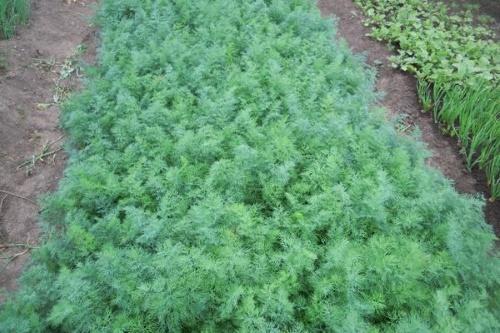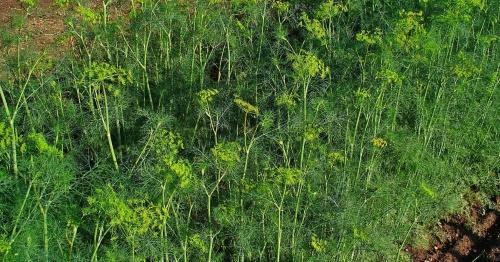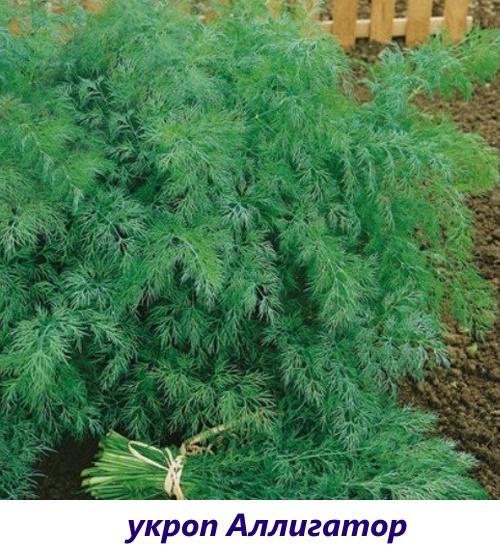Which variety of dill gives a lot of greenery
 Of the spicy herbs, dill is perhaps the most commonly used in the kitchen. It is added to the first and second courses, salads and snacks, as well as during canning vegetables. Therefore, it is important for every housewife not only to have fragrant leaves throughout the season, but also to make supplies for the winter. Therefore, when choosing seeds, the question of which variety of dill gives a lot of greenery becomes relevant. After all, if the bush is dense, quickly and for a long time increases the deciduous mass, then a good harvest can be collected from it. Often we sow what was found in the bins or buy seeds without really studying the information on the package. And completely in vain, because it is there that contains data on its yield and not only. Today we will tell you what to look for when choosing a planting material. In addition, we will get acquainted with the types of dill that give the most green mass.
Of the spicy herbs, dill is perhaps the most commonly used in the kitchen. It is added to the first and second courses, salads and snacks, as well as during canning vegetables. Therefore, it is important for every housewife not only to have fragrant leaves throughout the season, but also to make supplies for the winter. Therefore, when choosing seeds, the question of which variety of dill gives a lot of greenery becomes relevant. After all, if the bush is dense, quickly and for a long time increases the deciduous mass, then a good harvest can be collected from it. Often we sow what was found in the bins or buy seeds without really studying the information on the package. And completely in vain, because it is there that contains data on its yield and not only. Today we will tell you what to look for when choosing a planting material. In addition, we will get acquainted with the types of dill that give the most green mass.
How to choose dill and how are the varieties different?

The later the stem formation, the later the flowering, which means more leaves grow and more greenery can be taken from the bush. Conversely, the earlier the dill begins to form a stem, the earlier it blooms, which means there will be fewer leaves.
Depending on when the dill begins to form stems, its varieties are divided into 3 groups:
- Early ripe. Marketable ripeness - a month after sowing, and during this time the bushes have time to grow no more than 6 leaves. At the same time, flowering begins almost immediately. The advantage of such varieties is their early maturity, and the ability to have an early harvest of greens. However, it is not enough and in the second half of summer the plants die off.
- Mid-season. Stem formation occurs from day 46, and during this time the bushes have time to acquire foliage in an amount of 7 to 10 pieces. They have a longer harvest period and bloom later.
- Late ripening. From sowing almost two months pass before stalking. But during this period, a dense rosette with more than a dozen leaves is formed.
Thus, varieties with late stem formation have a longer period when the greens can be cut. Accordingly, they will give it more.
What variety of dill gives a lot of greenery?
Among the late-ripening species of dill, which are distinguished by good yields over a long period, it is worth noting the following varieties:
- Alligator. The rosette is large, raised, the leaves are gray-green. The height of the bush is no more than 25 cm, the foliage is ready for cutting on the 47th day after sowing. One plant can take up to 150 g of the crop.

- Patterns. The rosette is slightly spreading, the leaves are large, the bush is high, sometimes up to 1 m.One plant gives 500 g of greens, you can cut it starting 43 days after planting.

- Buyan. It grows as a wide branched bush, leaves are juicy, with a strong aroma. Maturation occurs on the 60th day of life. One bush gives 200 g of a crop.

- Boreas. Tall shrub (up to 140 cm), waxy leaves remain green and do not turn yellow. Ready to cut 55 days after sowing.

- Salute. The height of the bush is almost 60 cm, the rosette consists of 30 large leaves on long petioles. The first harvest can be taken 56 days after planting, cutting off almost 100 g of greenery from one bush.
